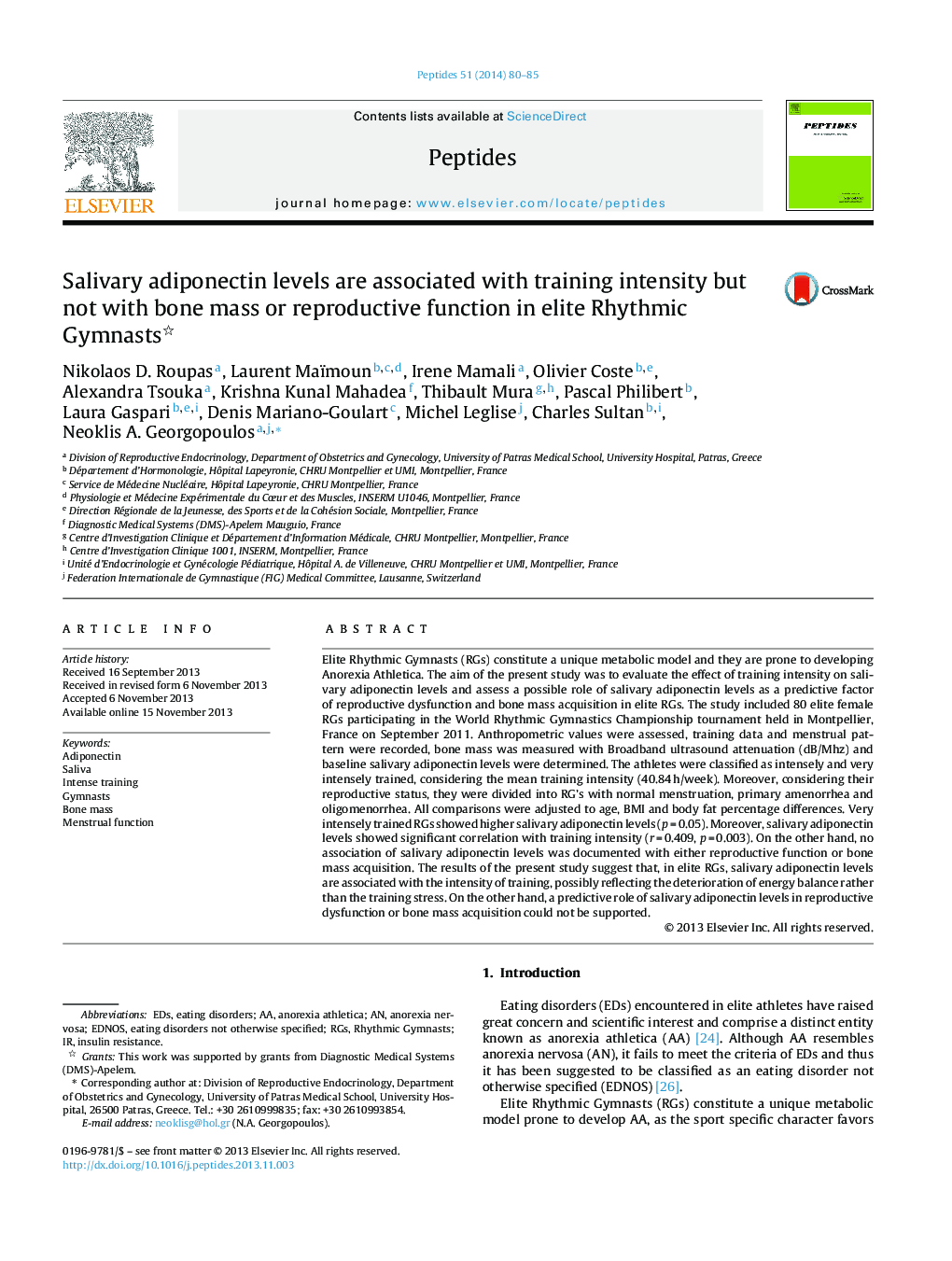| Article ID | Journal | Published Year | Pages | File Type |
|---|---|---|---|---|
| 8348500 | Peptides | 2014 | 6 Pages |
Abstract
Elite Rhythmic Gymnasts (RGs) constitute a unique metabolic model and they are prone to developing Anorexia Athletica. The aim of the present study was to evaluate the effect of training intensity on salivary adiponectin levels and assess a possible role of salivary adiponectin levels as a predictive factor of reproductive dysfunction and bone mass acquisition in elite RGs. The study included 80 elite female RGs participating in the World Rhythmic Gymnastics Championship tournament held in Montpellier, France on September 2011. Anthropometric values were assessed, training data and menstrual pattern were recorded, bone mass was measured with Broadband ultrasound attenuation (dB/Mhz) and baseline salivary adiponectin levels were determined. The athletes were classified as intensely and very intensely trained, considering the mean training intensity (40.84 h/week). Moreover, considering their reproductive status, they were divided into RG's with normal menstruation, primary amenorrhea and oligomenorrhea. All comparisons were adjusted to age, BMI and body fat percentage differences. Very intensely trained RGs showed higher salivary adiponectin levels (p = 0.05). Moreover, salivary adiponectin levels showed significant correlation with training intensity (r = 0.409, p = 0.003). On the other hand, no association of salivary adiponectin levels was documented with either reproductive function or bone mass acquisition. The results of the present study suggest that, in elite RGs, salivary adiponectin levels are associated with the intensity of training, possibly reflecting the deterioration of energy balance rather than the training stress. On the other hand, a predictive role of salivary adiponectin levels in reproductive dysfunction or bone mass acquisition could not be supported.
Keywords
Related Topics
Life Sciences
Biochemistry, Genetics and Molecular Biology
Biochemistry
Authors
Nikolaos D. Roupas, Laurent Maïmoun, Irene Mamali, Olivier Coste, Alexandra Tsouka, Krishna Kunal Mahadea, Thibault Mura, Pascal Philibert, Laura Gaspari, Denis Mariano-Goulart, Michel Leglise, Charles Sultan, Neoklis A. Georgopoulos,
